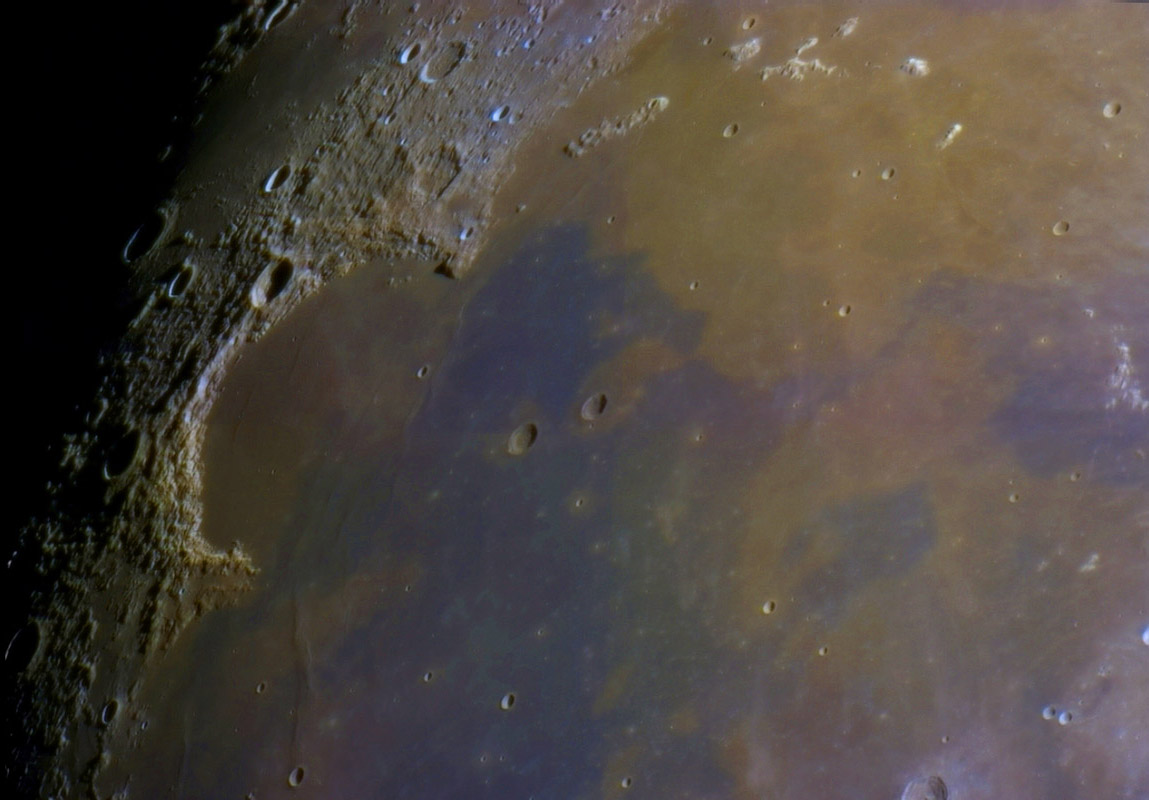September 5, 2017
Brown Flows
Originally published February 20, 2008

image by Fabrice Morin, Rouen, Normandy, France
Fabrice has used his color webcam to produce a detailed image of lava flows of two different compositions in northern Mare Imbrium. You can look online to find out more about what calibrated mapping by professional astronomers conclude about these flow compositions (brown are titanium-rich, blue are Ti-poor), but you can also deduce much about the geology and relative age just by looking at this image. First, which flows are youngest? They would have flowed over the older flows. Strong circumstantial evidence comes from the Jura Mountains area of Sinus Iridum. Although the topography could tilt in any direction, it is a reasonable guess that the mare is somewhat higher there and is lower near the missing edge of the Iridum crater. The mare closest to the Jura area is brown implying that that is older material not covered by the younger blue flows that filled low areas. Some support comes from noticing that the small patches of lava behind Prom. Heraclides (the left end of Iridum) are also brown - they are mixed in with Iridum ejecta, an area expected to be higher elevation than out in the maria. Notice that Helicon and le Verrier are both surrounded by patches of brown lavas - again expected (unless the blue was very deep) for the ejecta of these craters is slightly higher than the surrounding maria. Notice the mare ridge at bottom left - it includes both blue and brown. This implies that the brown lavas erupted and covered much of the Imbrium basin, and then blue lavas erupted and covered some of the brown. And then the mare surface folded somehow. This says that the mare ridge was not produced when the mare lavas were emplaced, but later. Interesting.
Chuck Wood
Technical Details
February 17th 2008. Meade 200mm LX90 telescope + TouCam webcam. This is a composite of 2 images - a black&white image (for the details) and a color-enhanced image.
Related Links
Rükl plate 10
Green lavas
Fabrice's website
Yesterday's LPOD: Yes
Tomorrow's LPOD: A Change in Texture
COMMENTS?
Register, Log in, and join in the comments.



